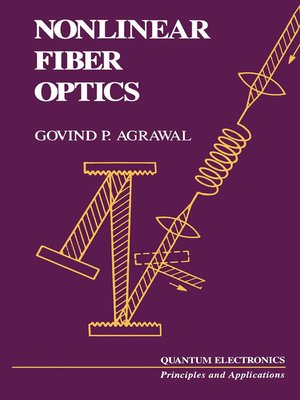
Sign up to save your library
With an OverDrive account, you can save your favorite libraries for at-a-glance information about availability. Find out more about OverDrive accounts.
Find this title in Libby, the library reading app by OverDrive.



Search for a digital library with this title
Title found at these libraries:
| Loading... |
Nonlinear Fiber Optics deals with various nonlinear phenomena in optical fibers, including wave propagation, group-velocity dispersion, self-phase modulation, optical pulse compression, cross-phase modulation, stimulated Raman scattering and Brillouin scattering, and parametric processes. The implications of various nonlinear effects on the performance of light-wave systems are emphasized throughout. This book consists of 10 chapters and begins with an overview of the fiber characteristics that are important for understanding nonlinear effects in optical fibers. A brief historical perspective of the progress in the field of fiber optics is provided. Fiber properties such as optical loss, chromatic dispersion, and birefringence are discussed. Particular attention is paid to chromatic dispersion because of its importance in the study of nonlinear effects probed by using ultrashort optical pulses. The chapters that follow focus on wave propagation in optical fibers, along with group-velocity dispersion and self-phase modulation. A chapter is devoted to pulse propagation in the region of anomalous group-velocity dispersion, with emphasis on solitons. The book concludes with a discussion of parametric processes such as harmonic generation, four-wave mixing, and parametric amplification. This book is intended for researchers already engaged in or wishing to enter the field of nonlinear fiber optics, for scientists and engineers interested in optical fiber communications, and for graduate students enrolled in courses dealing with nonlinear optics, fiber optics, or optical communications.






